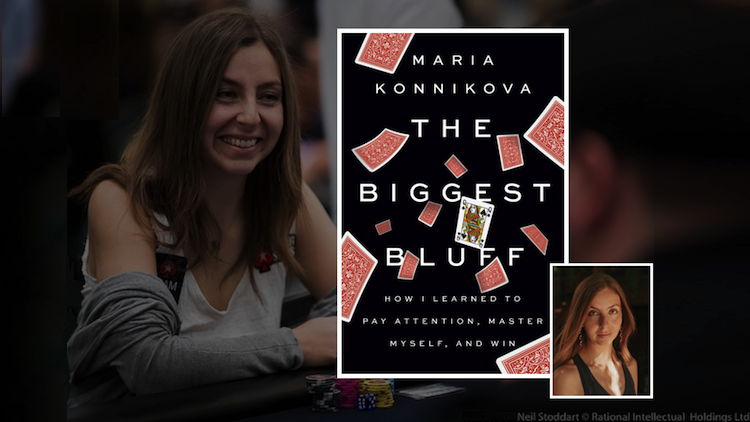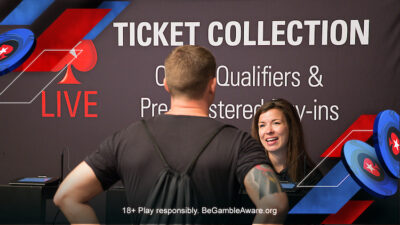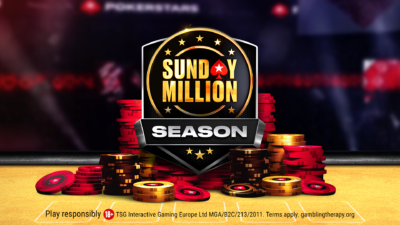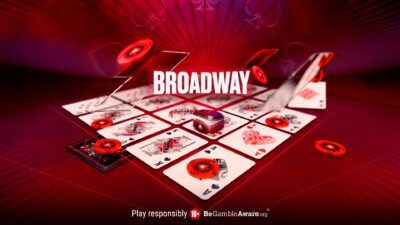Early in The Biggest Bluff: How I Learned to Pay Attention, Master Myself, and Win by Maria Konnikova — published today by Penguin Press — Erik Seidel offers the author some advice about the way she played a hand of poker.
It was a multi-way hand. After calling from the big blind and whiffing the flop, Konnikova checked and then folded to a bet and call. But Seidel invites her to look at the hand differently — as not an automatic fold, but a spot where she might have tried something else.
“You should consider check-raising here,” Seidel says. “Coming from you, the check-raise here seems strength.”
It’s a mini-lesson about knowing your own table image and learning how to exploit it, in this case by bluffing.
Konnikova realizes that in several conversations with the Poker Hall of Famer, “there’s a whole lot of ‘coming from you’ that gets thrown in.” He keeps referring to how others are perceiving her, and how that perception should be one of the things she thinks about when making her own decisions.


Maria Konnikova
The poker world first met Konnikova more than three years ago. Born in Russia, she moved to Massachusetts as a child. By the time she came to us she was a Harvard grad, a psychology Ph.D., a bestselling author, and a complete poker novice working on a new book project motivated by an interest to learn more about the importance of luck in our lives and how we humans deal with it (or don’t).
Many of us have been eager to find out just how Konnikova ultimately would choose to write about her experience. What lessons would she draw from poker, a game she hadn’t even played before embarking on the project? And what might she be able to teach us about our favorite card game?
Especially after getting to know to Konnikova, our curiosity grew even more. She might not have played poker before, but it was obvious she brought a lot to the (writing) table. We suspected The Biggest Bluff might be something special.
You know, coming from her.
And it is. The Biggest Bluff is wonderfully nuanced exploration both of poker and of human nature in which a gifted writer shares the experience of learning — about poker, about luck, and about life.
From Sherlock Holmes to con artists to poker
In one respect, The Biggest Bluff is motivated by and follows a similar trajectory as Konnikova’s earlier books, Mastermind (2013) and The Confidence Game (2016), both of which found Konnikova applying her background in psychology to explore specific areas of interest that she smartly makes seem not so specific, but applicable to life generally speaking.


.
In Mastermind: How to Think Like Sherlock Holmes, Konnikova draws on the stories of Arthur Conan Doyle‘s famous fictional detective to show how his mystery-solving methods relate to psychology and how the human brain works, distilling it all into a series of interesting discussions and useful lessons for those seeking to become better thinkers themselves.
In The Confidence Game: Why We Fall for It… Every Time, Konnikova explores the world of the con, doing a deep dive into stories of grifters and scam artists to show how their schemes work and why even smart people are fooled by them. Again she draws on psychology, in this case to help explain what motivates both the swindler and the mark.
I recommend both books, especially to poker players.
In these earlier titles Konnikova wasn’t writing about poker as such. But she might as well have been, given how much she concentrates on intellectual puzzles, emotional influences, and dealing with a world in which people are being purposefully deceitful in order to increase their “stacks” (so to speak) and deplete those of others.
Becoming someone else to learn about oneself
That said, The Biggest Bluff is also a departure for Konnikova. Both of her earlier books were motivated by personal interests and a desire to conduct a kind of comprehensive exploration of specific topics in order to draw out lessons and broad truths about the human condition. Both required the writer’s full commitment to her subject, but neither necessarily forced her to change her life so dramatically as did The Biggest Bluff.
First, Konnikova chose a line of inquiry — “to better understand that line between skill and luck, to learn what I could control and what I couldn’t.” Influenced by early game theory and especially the work of John von Neumann, Konnikova decided poker, which “unlike quite any other game, mirrors life,” was the best arena in which to conduct her investigation.
She then formulated a plan that involved recruiting Seidel to coach her and setting aside a full year to learn how to play poker, how to win at poker, and how poker can teach us things beyond what to do with jack-ten suited in early position — that is, how poker provides “a lens into the into the most difficult and important life decisions we have to make.”
This was going to be a different kind of commitment, she realized — not just a year of studying and writing, but of living another life altogether. Like that check-raise bluff Seidel was suggesting she consider, Konnikova was setting herself up to try something else entirely — in a way, to be someone else.
And as those of us already familiar with where Konnikova’s adventure took her — or familiar with taking two black aces to the flop only to see it come jack-ten-nine of hearts — things don’t always go as planned.
The newest of the newbies
Those versed in “poker lit” might think of books like Anthony Holden‘s Big Deal, Andy Bellin‘s Poker Nation, or James McManus‘s Positively Fifth Street as precursors for Konnikova. Holden’s book in particular provides a seeming analogue in the way it also presents a talented writer with plenty of non-poker achievements taking a year off from “normal” life to see what it might be like to be a poker “professional,” or at least try to be one.
Holden delves a lot into the psychology of poker, too. He even uses playing in the World Series of Poker Main Event as a kind of ultimate goal for his project, providing a kind of goal line to cross at its completion, something Konnikova does as well (at least originally).
But while Konnikova’s book does similarly take advantage of the inherently dramatic context of playing in poker tournaments to move her story forward, The Biggest Bluff is unique in several ways.
Unlike Holden who had played poker many years (often with other great poker writers, Al Alvarez and David Spanier), Konnikova was the newest of newbies. Early on she mentions how rare it is that we as adults get “to immerse ourselves in novicedom” and learn something entirely new. And she does just that, sharing with the reader the sense of wonder that comes with novelty, and the excitement when novelty becomes familiarity and learning occurs.


Maria Konnikova
Konnikova’s enthusiasm is infectious, and even longtime players who have gone through all of this themselves will enjoy reliving the many revelations they experienced when first taking up the game. That doesn’t just include learning about starting hand selection, pot odds, position, stack sizes, tells, or the structures of no-limit hold’em tournaments (her chosen variant and format), but also other, larger lessons about the game that translate more readily to life away from the tables.
Such lessons include learning how to handle losing (and how to handle winning, too), understanding the relative value of aggression and passivity (with associated insights related to being a woman in a “man’s world”), dealing with the “imposter syndrome,” recognizing the importance of paying attention, identifying personal biases and their effect on our judgments, and realizing how no matter how skillful we might make ourselves we cannot ultimately remove luck’s significance entirely (if we’re human, that is).
There’s another lesson, too — the one about making plans and having to change them. One year of poker becomes more than three as Konnikova’s study of the game takes longer than what the newbie first estimated.
Seidel warned Konnikova about that.
Accompanying Konnikova on her tourney journey
Seidel stars among the supporting cast of The Biggest Bluff. She describes him early on as Virgil to her Dante, more a guide than a mentor. I’ve seen other reviewers respond to the wisdom he dispenses in the book by characterizing him as Yoda to her young Jedi.
She comes up with other great metaphors and descriptors of Seidel, too, including making a great argument for a new nickname for him — the Dragonfly.


Erik Seidel
Seidel does, in fact, buzz in and out of the story frequently, always hovering nearby. Responding to Konnikova’s reports he confirms and confronts, and above all keeps challenging her much as all great teachers do with their students.
Seidel encourages Konnikova to seek out others’ advice, too, and her reports of these interactions are similarly fun and insightful. Dan Harrington, Phil Galfond, Andrew Lichtenberger, and Isaac Haxton all contribute significantly to her exploration, with cameos by Jason Koon, Patrik Antonius, and several others both useful and engaging as well.
I’ll omit listing the relevant observations from many psychologists, philosophers, scientists, writers of literature, and others Konnikova additionally weaves into her story and its many lessons. Just know that while her tourney journey is in some respects a solitary one, she is hardly ever alone.
Luck and skill, winning and losing
Interestingly, as the story progresses the importance of Konnikova’s tournament finishes tends to diminish. In this way the book itself reflects another of Seidel’s lessons — to stop dwelling more than necessary on results.
When playing the micros online or her first daily tournaments live, Konnikova lives and dies with outcomes, even while remaining aware and rightly skeptical that a single win or loss doesn’t necessarily indicate much of anything about her overall poker progress.
Then she learns, and as she moves onward and upward to play larger events around the United States, at various European Poker Tour stops, and eventually at the WSOP (including the Main), she assigns less significance to where she is finishing and more to the quality of her overall decision-making.
When it comes to tracking Konnikova’s results, those of us in poker can’t avoid a bit of a spoiler here. We already know Konnikova enjoyed some big successes, the most notable coming at the 2018 PokerStars Caribbean Adventure where she bested a 230-entry field to win the PCA National.


Maria Konnikova after winning the 2018 PCA National
While poker players will enjoy these reports of particular hands and events, for me the most interesting passages come when Konnikova looks up from the table and shares how what she’s learning about poker readily applies to other contexts.
Three of my favorite examples: how min-cashes are like settling and playing it safe, how telling bad beat stories is like reframing our lives as though things only happen to us, and how playing heads-up at the end of a tournament is like going on a (really, really important) first date.
There are many impressive, even lyrical passages in The Biggest Bluff, including several that address how luck influences us all, and in ways most of us don’t even realize or appreciate. Such literary flourishes, quotable lines, and carefully polished turns of phrase appear throughout, recalling those other great poker narratives referenced above.
The book also communicates a very real love and appreciation of poker, from Konnikova, Seidel, and others along the way. The Biggest Bluff will be read by a lot of non-poker players, and when they do they are going to discover a lot of great things about the game we all know and love.
Konnikova could have written a number of different poker books. The one she ended up writing is very strong. As we thought it would be, coming from her.
It also shows how in the end luck mattered, significantly shaping what her book turned out to be. Even so, Konnikova’s skill as a writer and thinker ensured that with The Biggest Bluff she’s showing down a winner.
Speaking of luck, we at PokerStars Blog were fortunate to be able to follow Konnikova for much of the period during which she worked on The Biggest Bluff. Some highlights below:
Back to Top
- WSOP 2017: Konnikova seeking answers in the cards about life, poker, and everything (July 2017)
- Video: Team Konnikova/Seidel (January 2018)
- Maria Konnikova completes ‘student to master’ journey with $84,600 victory, plus Platinum Pass (January 2018)
- PCA 2018: Konnikova seals the deal as the Biggest Bluff pays off (January 2018)
- Trending on Twitter, Maria Konnikova playing bigger than ever (May 2018)
- WSOP 2018: Then and Now: Maria Konnikova (July 2018)
- In Maria we trust: Konnikova talks poker and more at the World Economic Forum (January 2019)
- Bluff catching on a global scale: Maria Konnikova at the World Economic Forum (January 2019)
- Maria Konnikova’s live tournament tips (July 2019)
- WSOP 2019: Konnikova’s seven-deuce promise (July 2019)








